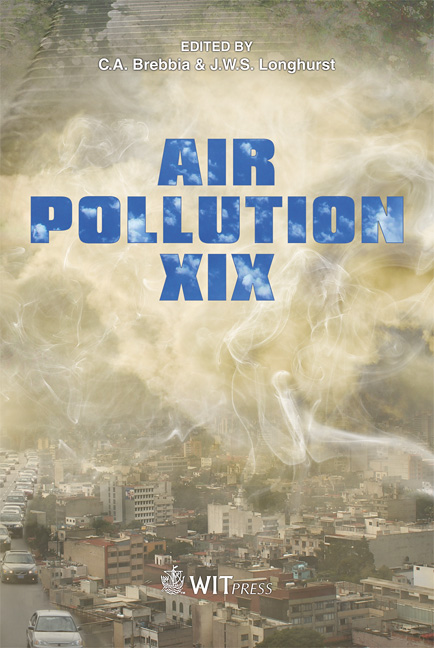Influence Of Natural And Anthropogenic Sources On PM10 Air Concentrations In Spain
Price
Free (open access)
Transaction
Volume
147
Pages
12
Page Range
149 - 160
Published
2011
Size
480 kb
Paper DOI
10.2495/AIR110141
Copyright
WIT Press
Author(s)
M. S. Callén, J. M. López & A. M. Mastral
Abstract
Particulate matter samples less than or equal to 10 m (PM10) were collected by using a high-volume air sampler during cold and warm seasons at two different areas in Spain: a rural area which was considered a \“non-polluted” area and an urban city, Zaragoza (Spain) in which vehicular traffic and small industries were the potential pollution sources. The PM10 samples were analyzed to determine their organic (polycyclic aromatic hydrocarbons (PAH) by gas chromatographymass spectrometry mass spectrometry) and inorganic (ions: anions and cations, by ionic chromatography and by inductively coupled plasma optical emission spectroscopy (ICP-OES)) composition. Higher PAH and ions concentrations were obtained in the urban area during the cold season when compared to the warm season and these concentrations were always higher than the ones obtained in the rural area. Fuel combustion sources associated with coal, natural gas, vehicular traffic and biomass combustion were the major anthropogenic PM10 pollution sources obtained by principal component analysis (PCA) in the urban area although natural sources associated with marine aerosol were also contributing to this PM10. Cluster analysis corroborated these sources and allowed classifying samples as a function of the meteorological variables, PAH and ion concentrations. Keywords: air pollution, PM10, PAH, anthropogenic sources, anions, cations, PCA, cluster analysis. 1 Introduction Particulate matter is considered one of the main air pollutants, whose origin can be attributed to natural and to anthropogenic sources, at higher proportions. Due
Keywords
air pollution, PM10, PAH, anthropogenic sources, anions, cations, PCA, cluster analysis





